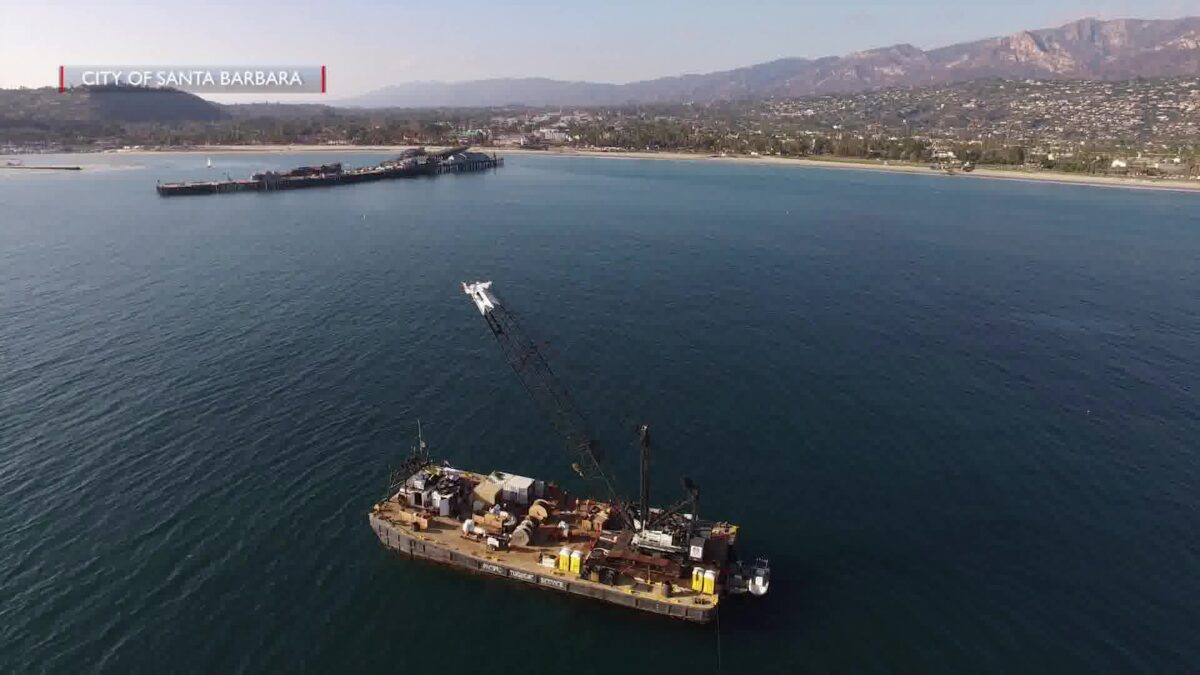Water Line Repair Job Underway for Desal Plant in Santa Barbara Involves a Special Barge

John Palminteri
SANTA BARBARA, Calif. (KEYT) – A temporary water intake line will be going through repairs for about four weeks in the coastal waters off Santa Barbara where it starts the flow into the Charles E. Meyer Desalination Plant.
The Offshore Desal Pump Platform Stabilization Project is a vital link to two offshore intake pump structures.
The pump structures are located about half a mile offshore in approximately 35 feet of water just east of Stearns Wharf.
Pacific Maritime has a 270-foot-long barge named Ocean Protector loaded with necessary equipment and materials. The barge will be to the East of Stearns Wharf for about a month. That includes the rocks, the crane and the crew which will be on board 24 hours a day. There are also divers. It will be a 50-year strengthening plan.
The plant was constructed in 1991 as part of the original plan to add a new water source. After some use, the plant went quiet.
In 2016-2017 the plant was reactivated. City of Santa Barbara Director of Water Resources, Joshua Haggmark said desal is, “behind the scenes, quietly providing about 30 percent of the city’s water so it’s playing a really important part of that.”
It was then discovered that one of the screen platforms were suspended about 18 inches above the sea floor, leaving space beneath the structure. They are not braced properly for the strongest storms.
The project will implement a permanent repair in part using the large rocks around the pipeline at the precise location where sea water is brought in.
The Federal Government provided 75 percent of the project cost of just over $5-million dollars, plus there’s financial help from a partner, the Montecito Water District.
Now was the time to do the work, not during an emergency or a break.
Haggmark said, “and that could really compromise our ability to operate our plan and take a long time to coordinate and get out there we have to do a lot to protect the environment when we are out there and it is much better to do it in a planned situation.”
From the facility on Yanonali Street the desal water is not blended with existing water. “it goes right into the system and pretty much anyone in the downtown area is primarily getting desal water right now,” said Haggmark. The desal plant process had sophisticated filters used worldwide. Some minerals are added back into the water.
The actual screens at the intake were carefully designed and are regularly cleaned to make sure they are efficient and sea life is protected.
Haggmark said, “it’s a tight weave but it really keeps anything out from being pulled into the system.”
The Latest Breaking News, Weather Alerts, Sports and More Anytime On Our Mobile Apps. Keep Up With the Latest Articles by Signing Up for the News Channel 3-12 Newsletter.